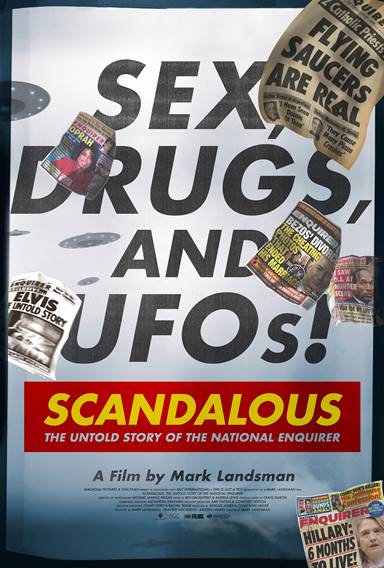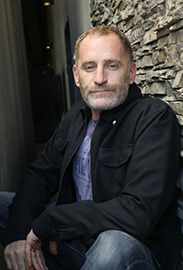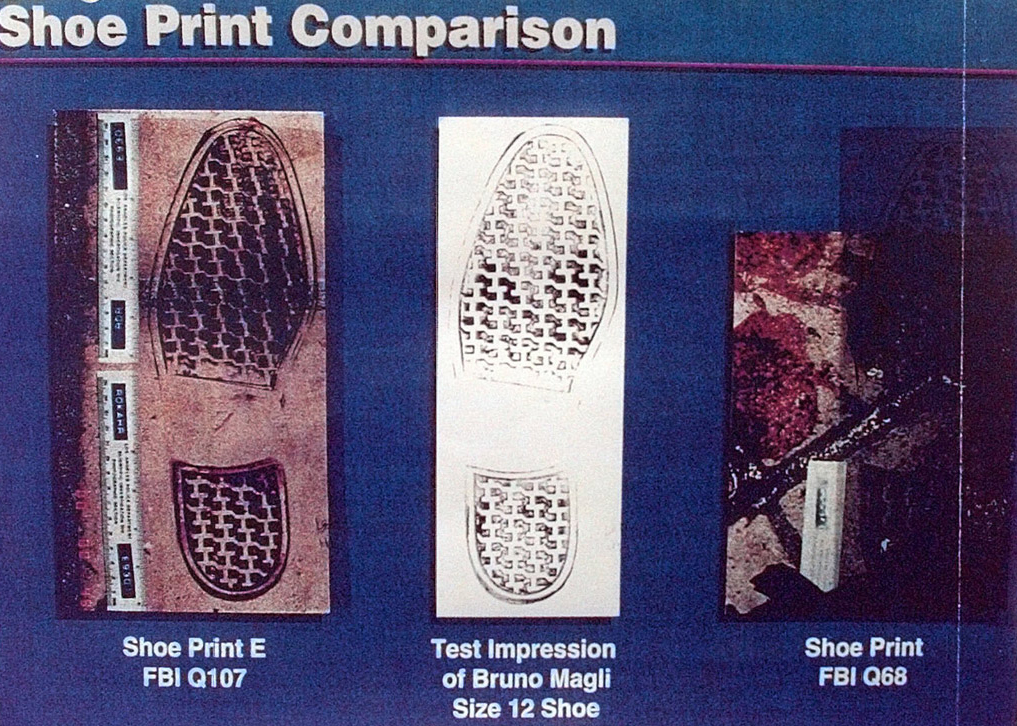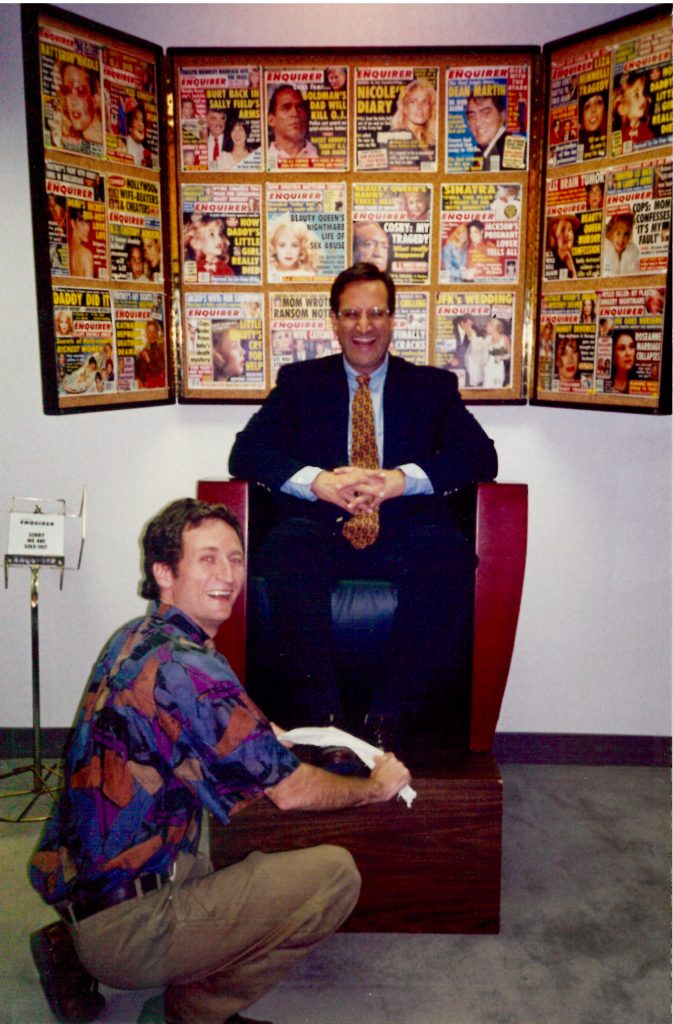Admit it. You’ve seen it. You’ve even pulled it off the rack at the supermarket checkout stand and thumbed through its pages. You’ve even stopped and read a few lines here and there. Or you sat in the beauty parlor reading every word and gossiping back and forth with “the girls” about what’s hot and what’s not and which celebrity is sleeping with whom. Or, you were like my grandmother and believed every word written was truth and gospel. What am I talking about? The National Enquirer, of course. The once throw away New York paper for fascist propaganda of the 1930s and 40s turned sports forum turned gore rag turned salacious sex and scandals turned celebrity gossip mag, then found itself morphing into a Pulitzer Prize winning tabloid only to backslide into controversial tactics of “catch and kill” and allegations of blackmail, with the latter two coinciding with and promulgated by the current political climate.

Since it’s founding in 1926 by William Griffin (with some funding courtesy of William Randolph Hearst), the National Enquirer has taken on many shapes and many colors, particularly once in the hands of Generoso Pope, Jr. in 1952. With initial funding from Frank Costello and the Mafia, Pope turned the paper from a broadsheet into a sensationalist tabloid. He had his finger on the pulse of America and tapped into that pulse for decades, spending obscene amounts of money to get stories and photos (think Elvis in his coffin), while building circulation to Herculean proportion. Once only available on newsstands and in drugstores, Pope can be credited for the placement of the Enquirer at the supermarket checkout stands. But to gain that prime spot he had to remove the gore and stomach-turning articles and photos and focus on topics like astrology and the always popular UFOs, aliens, and celebrities and by taking gossip to new heights. Since Pope’s death in 1988, the paper has taken some rather interesting turns with corporate ownership through American Media Inc. and then in 1999, the installation of David Pecker and his group as owners. Established editors-in-chief like Steve Coz who helped given the paper legitimacy with some newsworthy reporting were out. As of April 2019, Chatham Asset Management who had control of the AMI stock forced the sale of the National Enquirer to the Hudson Group. It seems that Anthony Melchiorre, owner of Chatham, was less than pleased with the reports of the paper blackmailing Jezz Bezos, not to mention the reports of “catch and kill” stories and alleged payment of hush monies to aid Donald Trump’s 2016 campaign.
Over the years, the National Enquirer became the influencer of the culture and politics, rather than culture influencing the paper. Pursuing major news stories, like OJ Simpson, Gary Hart, the death of John Belushi, and John Edwards, the Enquirer gave new meaning to the phrase “Enquiring minds want to know.” And now with SCANDALOUS: THE UNTOLD STORY OF THE NATIONAL ENQUIRER, director MARK LANDSMAN answers all those questions and more about the National Enquirer that each of our enquiring minds want to know.
I spoke in-depth with MARK LANDSMAN about the making of SCANDALOUS: THE UNTOLD STORY OF THE NATIONAL ENQUIRER, his novel approach to treating the paper like a sentient “Frankenstein” creation in order to develop a cogent throughline for this story, honing in on first-person interviews from former reporters as well as journalists like Carl Bernstein, doing extensive archival research, and the fun of bringing a musical element to the tale through needles drops and score. Enthusiastic and energetic, Mark’s own excitement over telling this story is evident in the finished product.

I must admit that I am very, very excited to be talking to you today about this one, Mark. I love this documentary. It is a delicious delight. What you delve into with the history of the National Enquirer going back to the 1950’s and Generoso Pope is fascinating, fascinating stuff. Then you find this great balance that supersedes and goes far beyond what the paper itself actually has been known as. You really give an authentic balanced portrayal of the history of the paper and how it has influenced the culture rather than the culture influencing the paper. The paper has consistently influenced the culture. So well done.
Thank you. I really appreciate your words. What you just articulated is really so much of what we really set out to do from the blueprint days of the film to now. We always say we wanted the film to raise more questions than it posed to answers because we are living in a time of a lot of questions and a time where people are sort of off in their own silos and nobody is actually having meaningful debate anymore in our culture. It’s just everyone is wrong before anything gets out of their mouths and I think the Enquirer is a perfect parable to kind of look at that and say, “Okay, well, we need to start talking otherwise nothing’s going to change.”

There was a period there, and you show this so beautifully, where the Enquirer really came into its own with some very responsible journalism, with the whole OJ thing. I actually spoke with quite a few of Enquirer reporters during the investigation and the trial. I worked in the same building as OJ and had known him for years. He was on the sixth floor. I was on the third floor. He used to joke and tell me, “Just remember, when we have an earthquake, I’m going to fall on top of you.” I always said, “Don’t worry. I’ll roll out of the way.” Being there and knowing so many of the players and being privy to certain information, there was so much that was overlooked or being ignored in the investigation and the media coverage.
Oh, that’s fascinating. Yeah, you’re identifying the one story. I would say there were maybe a few. I would say that in the John Edwards story, which we don’t cover for reasons I can explain, but that was the one time when “The Beast” really was allowed to flex its muscles fully. I think that’s when “King Kong” really roared with the Enquirer. I think it’s interesting. I don’t know how responsible the “journalism” was, but I would say that it was unparalleled and unmatched by the mainstream just because of the sheer amount of cash that they brought in. We’re talking millions of dollars and the sheer number of reporters that they had on the ground. I think the ratio was. . . I think the LA times had like four reporters on it and the Enquirer had 20. You just can’t compete with those kinds of resources.
So true. Absolutely.
And, not to mention, I think the advantage they had of decades and decades of totally unconventional sourcing, like knowing everybody in the prosecutor’s office, the police department, the jails, the hospitals, the barbershops, every maître d’ in town. They were so well-positioned to just find out anything that they needed to find out. But I agree with you. I think it was quite brilliant that they just honed in on the shoes. When no one else really did. They honed in on those shoes and finding the evidence that he wore the shoes. That obviously changed history.

I remember when OJ’s attorney and business associate Skip Taft had the big press conference in the courtyard of the building offering $100,000 for information leading to “the real killer.” I was there. There must’ve been ten or more Enquirer reporters there. It was really interesting watching this play out. And right now in today’s climate, I think it’s a very good magnifying glass with 20/20 hindsight for what happens if you actually do dig. If mainstream media would do more of this kind of digging, instead of reverting to more tabloidesque reporting, I think we wouldn’t have all of this “fake news” flying around today. And, I really like the lens that the documentary throws in that direction.
Yeah, it’s interesting. I think that the Enquirer in its formula allowed it to become easily adopted for propaganda. That’s the part of the story that is the most fascinating to me. How this paper that started out being, you could say, this relatively harmless gossip rag that had interesting stories about miracle tears, bad diets, psychic phenomena, the latest UFO sighting in Roswell, then became “how many pounds Liz Taylor just lost or gained”. That same paper, which was designed to basically be just a form of escapism for Missy Smith in Kansas City, the typical Enquirer viewer where you get a reader and it’s supposed to be like her Calgon that was just going to take her away to a realm of escape. Then the paper morphing into something that becomes, I would say, just blatant political propaganda over the course of its six decades. That was a remarkable trajectory and we just were compelled to follow that lead and figure out like, “Well how the hell did that happen? How did we get here?” And what role did this supermarket tabloid have in any of it?

Agreed. I love the fact you take us all the way back to the ’50s when this was nothing more than a racing forum essentially. And we get Generoso Pope who comes in there and he keeps morphing and the fact that he had his pulse on, I think as Iain [Caulder] put it, “on Missy Smith”, he had his pulse there and could change and turn on a dime.
Yes! Just think about people. This is an era where market research was in the most analog form in that era, right? This is pre-computer. This is pre-data really. So, what did they know? Like how did Generoso Pope know what to feed Missy Smith in Kansas City? Well, he had the sales and every single week they would tell him which celebrity was hot or not. So, if Farrah Fawcett was leaping off of the newsstand, he would put more Farrah Fawcett on the pages of the Enquirer. If Missy Smith’s interest in Farrah Fawcett was waning, you would stop seeing Farrah. He used Missy Smith buying power at that point of purchase at the checkout counter to tell him, to guide his editorial. And that I think was a kind of a form of genius. And on top of that they would get thousands and thousands of letters each week basically saying, “Oh my God, give us more! We want more “Charlie’s Angels” stories. Give us more “Charlie’s Angels” stories, less stories about … We don’t care what’s in Henry Kissenger’s trash. We want to know what’s in Farrah’s trash.”
And, he listened.
And, he listened. That’s an awesome point. He listened. He really listened. I mean you’re talking about circulation that beefs up to 70 million a week after Elvis.

I’m curious, Mark, how much of your own excitement of the discovery over the Enquirer’s past and in talking with all this plethora of reporters who have written for the paper, or those who write now, or like a [Maggie]Haberman who has some great commentary and observations, but how much of your own excitement of discovery over the past came into play with the structure of the documentary itself? Because the construct is so solid here that this could not have been an easy through-line to layout.
No, it wasn’t an easy through-line. We spent a lot of time, my editor Ben Daughtrey and my other editor, Andrea Lewis, and my producers, Kristen Vaurio, Jennifer Ash, Aengus James, there was a collective group of people around just really hashing this out. How are we going to tell this story? Does it overwhelm the viewer with so much information? The answer became pretty clear and that was that we decided to make the Enquirer itself the main character of the film. And, we thought, this inanimate object had a profound impact on our culture so it’s not unlike a Frankenstein monster story, where this creature is created and really the intentions of the mad scientist during the creation process is to animate the dead. It’s kind of relatively innocuous. But then the creature kind of gets unleashed on the public and havoc ensues. Then that same creature through a completely different leadership becomes a very dangerous monster. And, that’s what happens to the Enquirer. So, looking at it through that lens, then we started making choices about which stories told that story the clearest, which stories were really seminal moments in the paper where the editorial took a major turn. Gary Hart is a perfect example. That’s the moment when the privacy wall just came colliding, just came collapsing down, and it was open season on politicians at that point. T hey were celebrities now. OJ was a huge moment when the mainstream, tabloids and mainstream, had this bizarre blending and blurring of lines. And, of course, David Pecker coming in and the total climate change that happens under his regime.

That’s one of the great things that you also bring to light here that I think is so important for people to see and that is how the Enquirer itself and how tabloid and the commentary on how we consume media, how this helped fuel the rise of Donald Trump. Going back long before he started running for office, he learned how to manipulate the media through the National Enquirer.
Well, through the National Enquirer and also the New York tabloids, the Post and the Daily News.
Yes, the Post. The Post is a category all by itself.
I know. That’s another film. Yeah, a backup. Yeah.
And then you have all of these reporters. I know Malcolm Balfour was very instrumental in connecting you with all of these people for the documentary. How do you decide which ones you want to talk to? I’m betting you talked to all of them. But then how do you cull it down into what you’re going to include in this doc?
It’s interesting that we had a lot of people refuse to take our calls, refuse to return our calls. The people who sort of strung us along for weeks and weeks at a time, to say that they would participate only to drop out. We had people who claimed that they were writing a book and couldn’t be a part of it or that they had signed a really restrictive NDAs with AMI and they were fearful of any kind of legal reprisal. But within that, there were people who were courageous enough to really want to talk. And, beyond courage, we really wanted to talk to people who were seminal figures, major figures, big writers, major editors, editors-in-chief. We really weren’t interested in secondary sourcing. We really wanted first person on the ground, I was there in the room when it happened. And so, that’s how we decided who to go for. Then it was just a series of like you would talk to X person and that would open up the doorway to Y. You would talk to Y, and he would suggest that you talk to Z. And Z would laugh in your face and say, “There’s no way in hell I’m going to you.” You know what I mean? It was kind of like that. So it took a long time to get access to people. But once we had a critical mass we felt really good about it.

Since we are almost out of time, I have to ask you about the implementation of your soundtrack, which is terrific. But what stands out the most for me with your track is using “Flight of the Bumblebee” as the backdrop to the buzzing hive of the Lantana Headquarters newsroom. I was roaring! That was such perfection. And, of course, the fact that there is the strong metaphor with the actual Lantana Building, the newsroom. It’s all windows so that everything is an open book. Nothing can ever be hidden. And that’s exactly what Pope did with the paper. So, I’m curious as to picking “Flight of the Bumblebee” and other needle drops and plotting out little moments like that through the music that really then elevates this doc to the next level.
Oh, thank you! Oh my God! I love that you asked this question because music is at the center of my passion and what we get to work with. The most fun aspect of what we do in filmmaking is that. It was just so much fun to sort of intuiting or feel which songs would be most appropriate for which era that [we were talking about] with the Enquirer. Do we want to be literal and have the song be from the era or more, in the case of “Flight of the Bumblebee”, something that was more kind of lyrical. It was just a blast to kind of sit there with my editors and our incredible music supervisor, Carter Little, and our phenomenal composer Craig DeLeon, and put our heads together and say, “This is a whole other layer of the film.” For me as a filmmaker, it’s really one of my most favorite layers, the layer of music. So, I’m really happy, really happy that that stood out for you because that’s just where you can have a lot of fun as a filmmaker.

And, of course, then you set a lot of the music to archival footage. It’s not just thrown in there. And it’s not a backdrop to current interviews. It goes with your archival film footage and photographs.
Yes. And, you know, the film is deeply reliant on archive to bring the story and the time period to life. It is the film. It’s a cinematic experience and I think archive can be used in all kinds of ways, and we were really interested in having archive be extremely dynamic and really visually intriguing for people. And fun. It’s fun. This archive is fun.
by debbie elias, exclusive interview 11/14/2019












